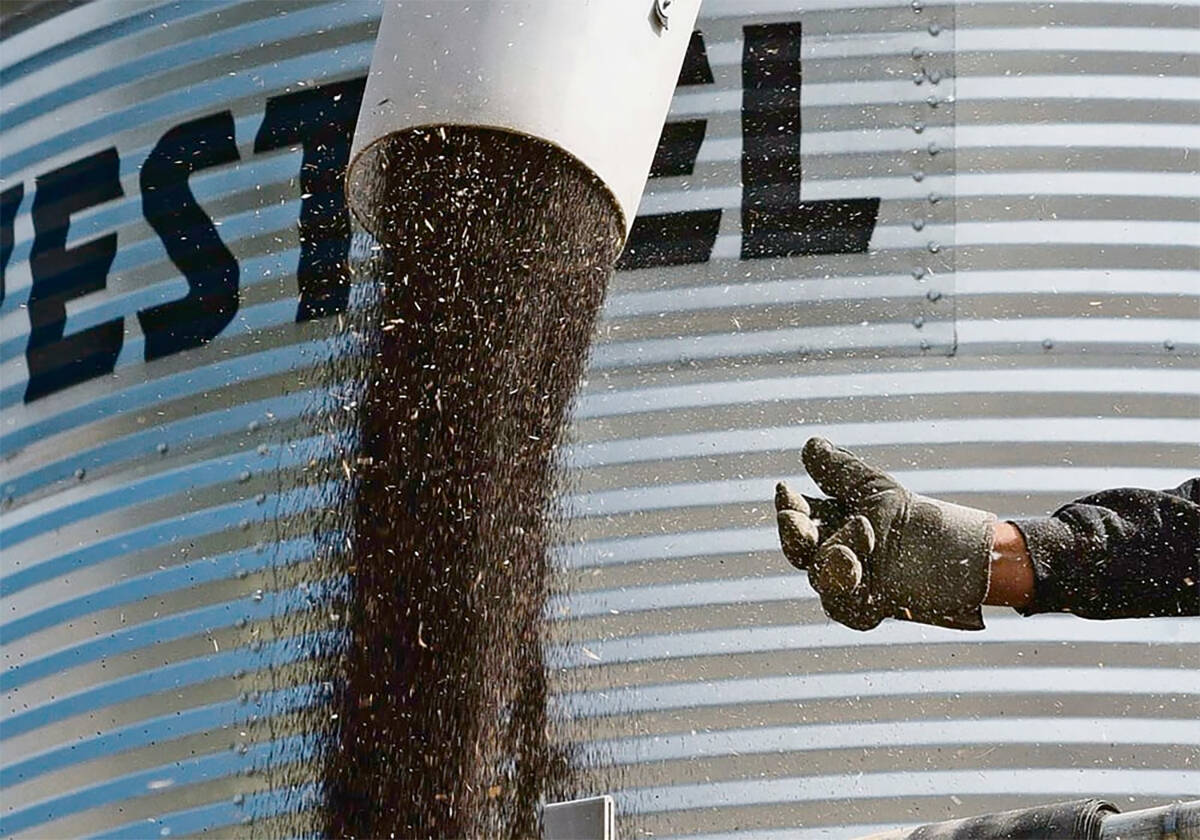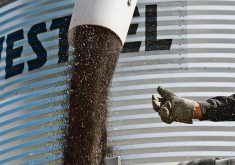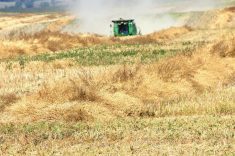In the early 1980s, when University of Saskatchewan horticulture researcher Les Kerr was dying, he called the department head down to his hospital bed.
Kerr told his boss he wanted the cherry research he’d begun to continue. He gave the university money to help pay for a graduate student.
Though the money eventually ran out, it kept cherry research at the university alive long enough that others took it over.
It is finally bearing fruit.
Full-sized, long-stemmed prairie cherries – good for eating fresh, processing, wine and juice – may soon be ready for commercialization, says U of S horticulture researcher Rick Sawatzky.
Read Also

Farmers urged to be grain-safe this fall
Working around grain bins comes with risk, from farmers falling to drowning in grain: Experts have five tips to help avoid grain-related accidents this harvest.
Dessert cherries, meaning those good enough to eat off the tree, could also be soon coming.
“We can produce these things probably as cheap as borscht,” said Sawatzky, who has been breeding varieties that can withstand harsh prairie conditions and also provide high quality fruit.
The dwarf cherries for which Sawatzky has high hopes, are not sour cherries or Nanking cherries.
Sour cherries can’t grow in prairie conditions. Nanking cherries, which do grow on the Prairies, are a hassle to pick because they cling close to the branch and are often hidden among leaves.
Easy pickins’
The new dwarf cherries are long stemmed and easy to pick, and good for most processing, Sawatzky said.
He is testing a large number of varieties to see which produce the best fruits that can match those brought in from British Columbia.
But Sawatzky doesn’t want farmers to rush into trying to produce these cherries, even if they are soon developed. He said markets for these varieties will have to be developed first.
The potential for prairie cherries will be decided by how processors accept and use the fruit. They could become pie filling and dehydrated fruit, as sour cherries are now. But if they are also used in the beverage industry, their potential is much greater, Sawatzky said.
No matter how far the prairie cherries go, they have won a loyal following among U of S horticulturists, he said.
“We’ve gotten quite fond of the juice and wine from these things.”
Sawatzky said the cherry research he’s doing now would have probably died years ago with Kerr if he hadn’t left the funding that continued his work.
“If it’s one of your priorities when you’re going out, it’s got to matter to you.”















